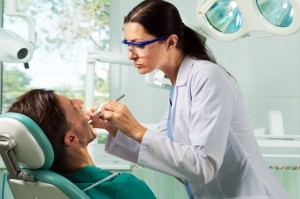 After a dental cleaning, it’s common for your dental hygienist to polish your teeth. Although that super-smooth feeling is the perfect punctuation to a freshly cleaned smile, is this step purely cosmetic?
After a dental cleaning, it’s common for your dental hygienist to polish your teeth. Although that super-smooth feeling is the perfect punctuation to a freshly cleaned smile, is this step purely cosmetic?
First things first: how are teeth polished? Your hygienist will often use a ridged rubber cup, called a prophy cup, in conjunction with an abrasive paste to smooth teeth after a procedure. Air-powder polishing is also another common method that uses air and water pressure with a powder to remove surface stains.
So, is the result purely cosmetic? Of course not! Polishing teeth with a mild abrasive does help get rid of surface stains, revealing a brighter smile. However, bacteria also have a much harder time sticking to smooth teeth, as there are fewer pits and fissures to hide in. So, polishing can not only help you have a brighter smile, it can help that smile stay healthy for longer.
There has previously been some concern in the dental community over whether polishing can do more harm than good, as any abrasive substance can wear down tooth enamel. However, newer polishing pastes are safer to use and come with a myriad of extra benefits, such as tooth desensitization and added antimicrobial properties.
If you want to polish your teeth at home, many toothbrushes now come with built-in prophy cups, and you can also get them as an attachment to your water flosser. However, check with your dentist to see if this is safe for your teeth. Frequent application of any abrasive substance could cause harm to weaker or sensitive teeth, so it’s best to check with the professionals to see if more frequent polishing is healthy for you.







Leave a Reply